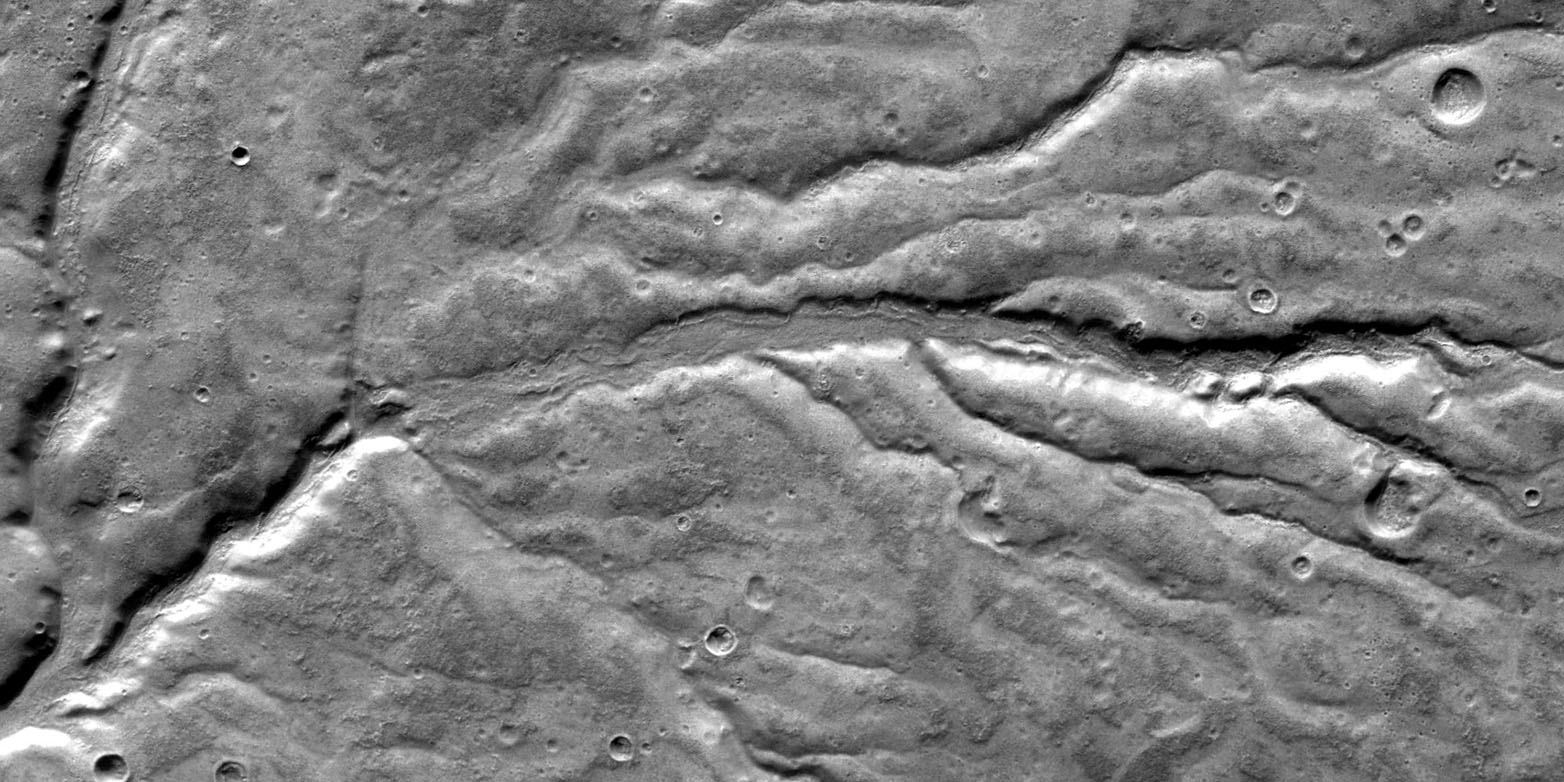Astonishingly similar: valley networks on Mars bear a strong resemblance to those in terrestrial arid landscapes. Researchers have been able to demonstrate this using the angles of river valley branches. From this, they infer that Mars had a primeval climate in which sporadic heavy precipitation eroded valleys.
The surface of Mars bears structures that resemble river networks on Earth. Scientists therefore assume that there must once have been enough water on the red planet to feed streams that incised channels into the subsoil.
For years, however, researchers have debated the origins of this water: was it rainwater that caused streams and rivers to swell? Or did ice in the soil melt due to volcanic activity, and seep out to form rivers? Each of these scenarios leads to a completely different conclusion about the climatic history of the red planet.
A new study now suggests that the branching structure of the former river networks on Mars has parallels with terrestrial arid landscapes. This has been demonstrated in a recent paper published in Science Advances by physicists Hansjörg Seybold and James Kirchner from ETH's Institute for Terrestrial Ecosystems, and planetary scientist Edwin Kite from the University of Chicago.
Valleys eroded mainly by rainwater
Using statistics from all mapped river valleys on Mars, the researchers conclude that the contours still visible today must have been created by surface run-off of (rain)water. They therefore exclude the influence of groundwater or melt water from the soil as a dominant process for shaping these features.

The distribution of the branching angles of the river valleys on Mars are strikingly similar to those found in arid landscapes on Earth. According to lead author Seybold, this implies that there must have been sporadic heavy rainfall events on Mars over a prolonged period of time and that this rainwater may have run off quickly over the surface shaping the valley networks. This is how river valleys develop in arid regions on Earth. For example, in Arizona, researchers observed the same valley network patterns in a landscape where astronauts are training for future Mars missions. Valleys in arid regions fork at a narrow angle.
The branching angles on Mars are comparatively low. Seybold therefore rules out the influence of groundwater seepage on Mars. River networks that are strongly affected by re-emerging groundwater, as found, for example, in Florida, tend to have wider branching angles between the two tributaries and do not match the narrow angles of streams in arid areas.
Conditions such as those found in terrestrial arid landscapes today probably prevailed on Mars for only a relatively short period about 3.6 to 3.8 billion years ago. In that period, the atmosphere on Mars may have been much denser than it is today. “Recent research shows that there must have been much more water on Mars than previously assumed,” says Seybold.
Evaporation made it rain
One hypothesis suggests that the northern third of Mars was covered by an ocean at that time. Water evaporated, condensed around the volcanoes of the highlands to the south of the ocean and led to heavy rainfall there. As a result, rivers formed, which left the traces that can be observed on Mars today.
The big question is where the water has disappeared to over time. “It’s likely that most of it evaporated into space. Traces of it might still remain in the vicinity of Mars,” says the physicist, “but this is a question for a future space mission”.
Reference
Seybold HJ, Kite E, Kirchner JW. Branching geometry of valley networks on Mars and Earth and its implications for early Martian climate. Science Advances 2018; 4:eaar6692. DOI: external page 10.1126/sciadv.aar6692


Comments
No comments yet